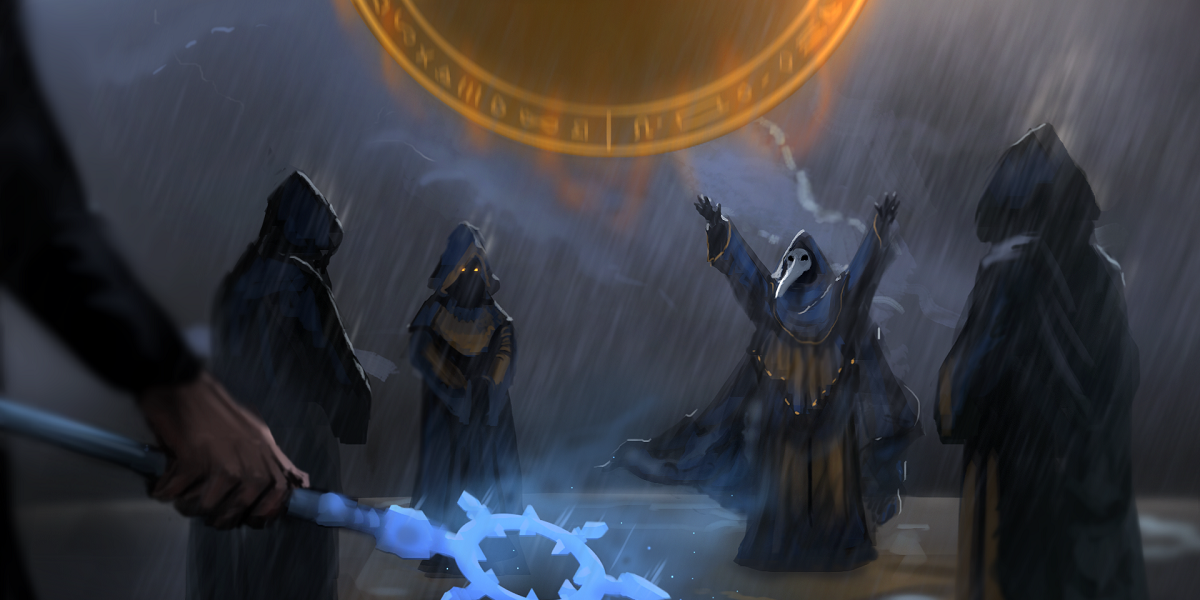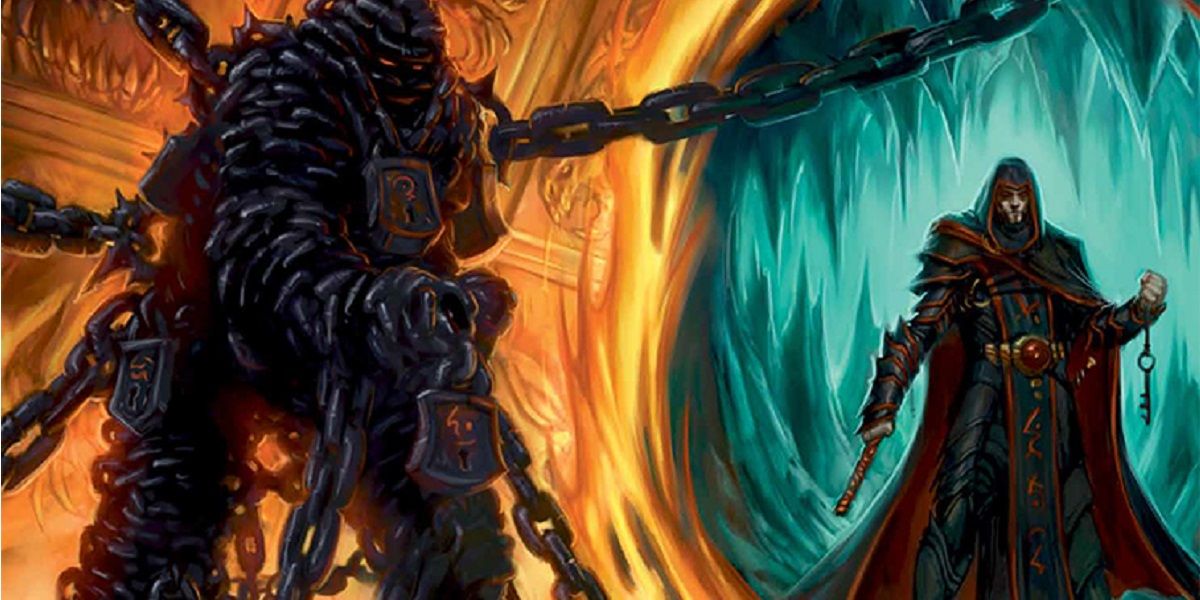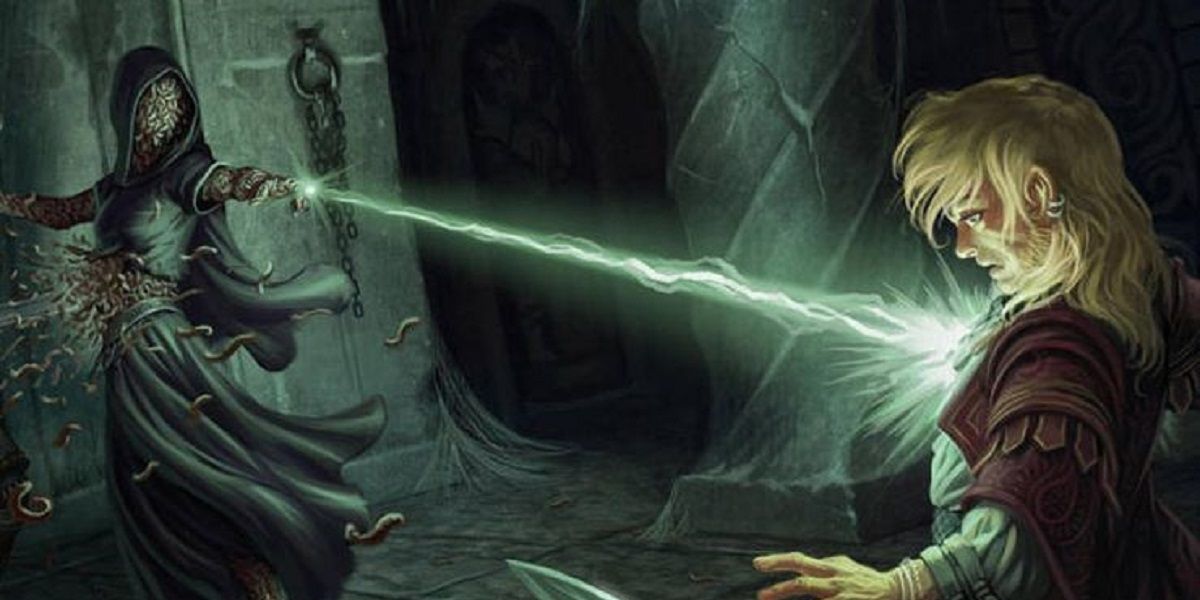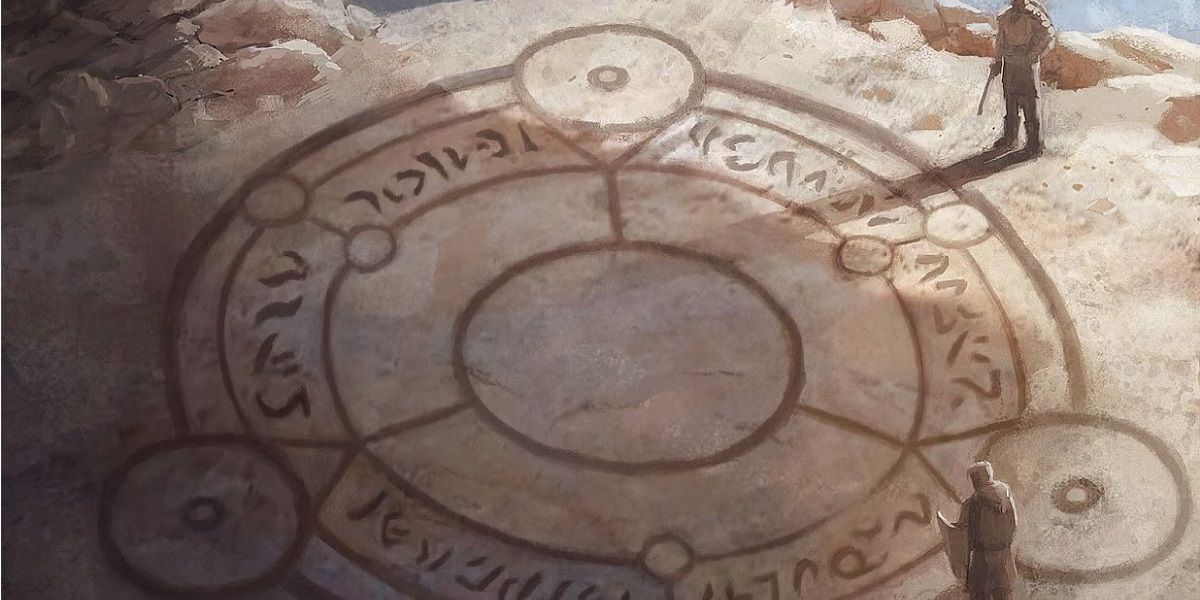Dungeons and Dragons is a game with a variety of different spells that do wild things and a lot of it requires some creativity. These spells can have massive utility value for a caster, like creating short term fortresses for players to hide inside. Some are powerful damage spells capable of bringing down firestorms on the heads of those unfortunate enough to get caught in them. However, not all spell casters are considered to be good people, in fact, many are as evil as they get and can twist even menial spells to horrifying effect.
The following is a list of spells that if used in the prescribed ways make a person, a very bad person. If a player's alignment in-game isn't evil after using any one of these spells in a prescribed way, then it's likely the campaign their in doesn't use the alignment chart. So, unless a player is actually trying to be evil, don't use these spells in the following ways.
10 Magic Jar
Magically putting a soul, potentially the players, into a simple jar and then targeting another creature within 100Ft of the jar, that creature must make a charisma save. On a failed charisma save, the souls swap positions, the soul in the jar takes this person's body and the original owner of the body has soul their soul put in the jar.
This is functionally body snatching, and the person who used the spell originally doesn't have to lose their body either. That person stores that fully functioning soulless body elsewhere, this leaves the victim's soul in a position that if the glass breaks they instantly die. This spell is pretty evil regardless of how you look at it.
9 Heat Metal (Shake and Bake)
Heat metal on its own is a pretty benign spell, a player could cast it on an opponent's weapon and disarm them, or make a metal door functionally inoperable for a few turns. This is pretty simple stuff, but this spell gets dark if you target specific things. Does someone have some metal screws in their body? A metal rod holding together a bone after a break? This will cause extreme pain.
BUT WAIT, IT GETS WORSE, a player could target someone in full plate armor. The full plate takes a minute to take off, and being encased in metal, that person will bake to death should they fail to get out. That's one minute/10 rounds of 2d8 fire damage, 20d8 fire damage is likely to kill a lot of things in an excruciatingly painful and slow way.
8 Glibness
Once again not an inherently evil spell, it'll just give a player a flat 15 as a charisma check for a period along with their proficiency modifier. If a bard or warlock is the caster this flat 15 could easily be turned into a 25 with proficiency. This is great if the player uses it to talk down an angry god intent on harming someone/something else, or saving a young child from the executioner's axe.
It gets really twisted and dark if the same spell is instead used to CONVINCE that angry god he's not doing ENOUGH damage, or the child NEEDS to get axed. This spell is how you get cults worshipping absolutely horrifying creatures that no sane person would worship UNLESS they got hit with a 25 flat Charisma persuasion roll.
7 Imprisonment
Imprisonment is pretty straight forward, a player can imprison someone in a variety of ways and they can't be released unless 9th level magic is used. Bury them deep underground, chain them, set them to sleep indefinitely, put them in a tiny maze for all eternity, the spell doesn't end unless someone dispels it.
Indefinite isolation and incarceration will drive anyone insane, so this spell is a special kind of evil to throw at another. It's only meant to be used on things that can't functionally be killed by conventional means.
6 Geas
This is a mind-controlling spell and aside from it being used to make someone do something they don't normally do, it can last up to a year. If the person doesn't do as instructed once per day they take 5d10 psychic damage. It can't force another person to kill themselves, but it can force another person to harm people they love or care about.
Casting Geas on another and then telling them to do as bidden or die from the psychic backlash is pretty damn evil. So refrain from doing this, or not, it's up to how someone wants to play.
5 Disintegrate
Good ol' disintegration, literally Lazer beaming another creature right out of existence. Pointing a finger and making something else turn to dust is a great way to ensure resurrecting whatever was pointed at just became infinitely harder. This is one of the classic villain spells, and any self-respecting dark magic wielder will have access to it.
Don't worry about how a player uses this spell, there is really no way this spell is not an evil one. Though functionally a good spell if cast on a villain, its core uses are almost universally malevolent.
4 Wish
A spell that has no inherently evil properties, it can be twisted to malicious ends should the player decide to do so. The real darkness hidden in the spell is that its limits are dictated by the DM, otherwise, IT CAN DO ANYTHING. So one could say, "Everyone in the world gets, like, the NASTIEST wedgy, now" and done, everyone gets a wedgy.
But a wedgy is pretty tame, this spell can reshape continents, blackout the sun, or open portals to the most horrific and darkest places in the universe. Casting this with vile intent can have some truly evil and earth-shattering effects.
3 True Polymorph
This one is a staple of nasty cartoon villains across a variety of media. Its how you get the frog prince or transform any royalty into a more displeasing form. If used, it transforms anybody into an animal of the caster's choice and the effect is permanent after one hour. However, most of these cartoon villains seemingly aren't really bringing their A-game when using this spell.
The real trick is then taking the helpless frog prince and serving it to whoever the king is, and with a snap of the fingers, reverting their form halfway through the meal. Once again, don't do something like this. Or, uh, just transform a t-rex into something small and cute, then transform it back when no one expects it.
2 Create Greater undead
There is a very valid argument depending on how undead function that raising the odd skeleton or zombie is not fundamentally wrong or evil. If they are not fuelled by souls, they are a guilt-free way to get grampa working on the farm again, just like he always wanted. Create Greater Undead gets very different results than a skeleton or zombie.
What is created by the spell is an undead monstrosity, it is not designed for labor nor could it be. These creatures are made to terrorize and kill others, only a malevolent spell caster would create something like a devourer. This one is definitely evil no matter what the player does with it.
1 Teleportation Circle
Not generally evil, the teleportation circle goes from useful means of transportation to a horrible murder device based on where it takes you. The mechanics of it also make this thing a dubious horror, if it stays open for a split second it can cause a lot of nastiness to slip through.
It could teleport some hapless person to the elemental plane of fire where they'll basically combust. If that's not quite interesting enough, what if the portal goes to the bottom of an ocean? Then whoever was on it gets compressed hundreds of miles below the ocean's surface. If the portal is the type that actually opens a hole to someplace else, the force of a pressurized water spray from the bottom of an ocean could shred flesh and shatter bone. Yup, those are pretty evil ideas.











